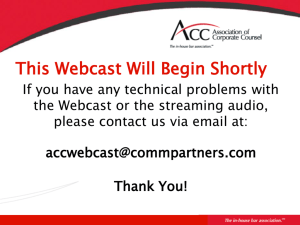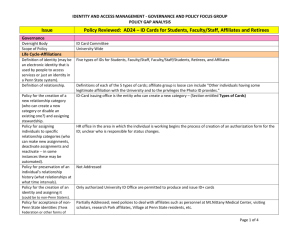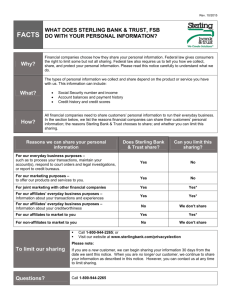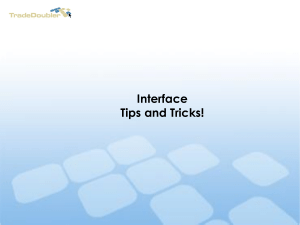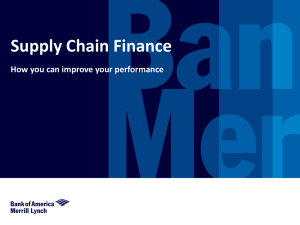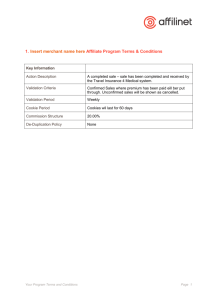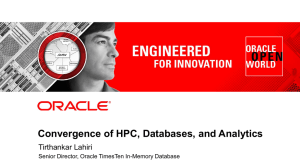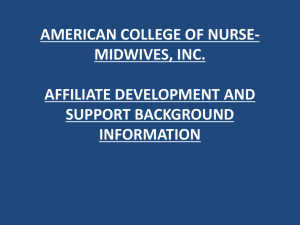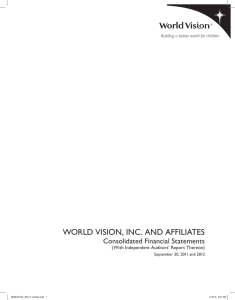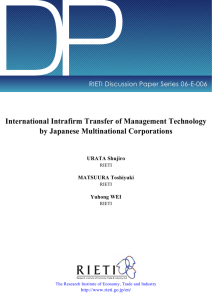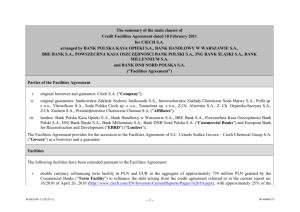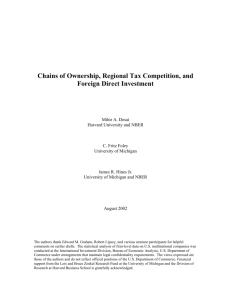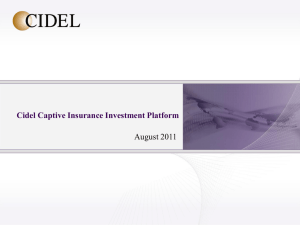Title of presentation runs here on two lines / Arial Regular 30 pt
advertisement
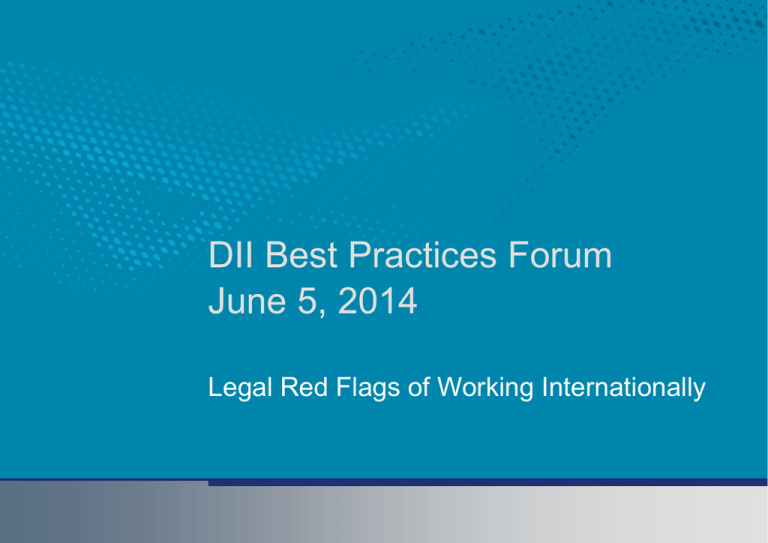
DII Best Practices Forum June 5, 2014 Legal Red Flags of Working Internationally Panel Members • Scott McCoy – Vice President, General Counsel, Secretary and Compliance Officer, Siemens Government Technologies, Inc. • Alice Eldridge – Vice President and Chief Counsel, BAE Systems Land & Armaments • Katie Fish – Transparency International, Project Officer – Companies Index • Moderator: Dana Vader – Senior Legal Counsel, Airbus Defense and Space, Inc. Agenda • 2 Case Studies – Fact Pattern 1—M&A Transaction – Fact Pattern 2—Sales Opportunity in New Market • How NGO’s like Transparency International can be a valuable resource to Companies Fact Pattern 1—M&A Transaction • You work for a US corporation as a lawyer or compliance officer • Your US Corp has bought a UK company with affiliates in Japan, Indonesia, and Australia • You were not on the M&A team that did the due diligence, negotiations, etc. for the deal • UK Corp (and its attorneys and compliance employees) will be handled by another lawyer/compliance officer • You are charged with overseeing compliance at the three affiliates after the deal closes in six months What should you do now? • • • • • • Get access to due diligence materials from the deal team Learn about affiliates’ business and management Learn about current compliance program and legal oversight Do the affiliates have significant export/import operations? Do the affiliates participate in contracts with offset obligations? Have the affiliates been suspended or debarred from public contracts in any country? • What are the affiliates’ major public and private contracts? • Do the affiliates have pending compliance investigations and/or litigation? • Have they had government investigations and/or compliancerelated litigation in the past (e.g. FCPA, UKBA, local corruption laws)? What should you do now? • How are affiliates organized from a corporate organization point-ofview? • What is the relationship between affiliates and local political or military structure, if any? • What are the affiliates’ local reputation and what is the compliance reputation of these countries? • Who is local counsel and who is providing compliance and legal support to these affiliates now? • What is company culture and internal politics overall? • Make contact with affiliate management and compliance personnel • Strongly consider travel to main affiliate locations if at all possible • Time is of the essence as initial contacts can be crucial (get in quickly and before others) • Consider impact of findings not discovered in due diligence before deal closes (warranties, disclosures, etc) Fact Pattern 2—Sales Opportunity in New Market • Satellites are Us (SaU) is an exciting medium sized commercial and military satellite manufacturer • SaU has a reputation for being a fierce competitor, and it has been pursuing opportunities in various new markets around the world. • You are the head of BD for SaU, and one of your employees was on a plane flying to India. He was bumped to First Class and started speaking with the gentleman in the seat next to his. From their conversation, he learned: – About a new Indian satellite competition that was in early stages. The program would be to build and launch satellites that would be capable of hosting commercial payloads and a secret military payload – Indian laws require providers of military equipment to offer at least 30% direct and indirect offsets • Your employee wants to engage an adviser to help pursue this campaign and connect SaU to the right people in the Indian Government. The gentleman sitting next to him in First Class is a former Air Force General and is very well informed about the upcoming competition. What should you do now? Sales Opportunity in New Market (cont.) • Nine months after SaU begins pursuing this new satellite opportunity, one of your employees calls you from India where he was pursuing Indian Offset Partners prospects. • Some of these were new prospects who had been suggested by your interface within the Indian Satellite Program Office. • Several prospects have already begun working with SaU as team members. • While visiting one of the potential new prospects, your employee is told that one of your existing team members has paid bribes and was illegally diverting work away from the new prospect. What should you do now? Sales Opportunity in New Market (cont.) • While visiting one of the SaU team members, your employee is handed an envelope. • Inside is a strategic capture plan from one of your competitors, as well as some preliminary government evaluations of one of your competitor’s offerings. • None of the data bears any special markings. • Your team member says they received it from a General in the Air Force. What should you do now? Sales Opportunity in New Market (cont.) • YOU WON! • The program is winding down. Suddenly you realize that you are well short of being able to satisfy your offset obligation. What should you do now? NGOS AND CIVIL SOCIETY AS A RESOURCE 1. Beyond the CPI: – – – – – Government Defence Anti-Corruption Index (GI) Global Corruption Barometer How to Bribe: A Typology of Bribe Paying and How to Stop it Resisting Extortion and Solicitation in International Transactions Adequate Procedures – Guidance to the UK Bribery Act 2010 2. Engagement with TI National Chapters and other local civil society groups 3. Advice on specific subjects: Due Diligence in Offsets 4. Identification of good practice RAISING THE BAR – SEVEN QUESTIONS 1. Public reporting 2. Leadership speaking up 3. Board assurance 4. Corruption risk assessments 5. Corruption risk in third parties 6. Training of staff in exposed roles 7. Follow up on whistleblowing Conclusion
